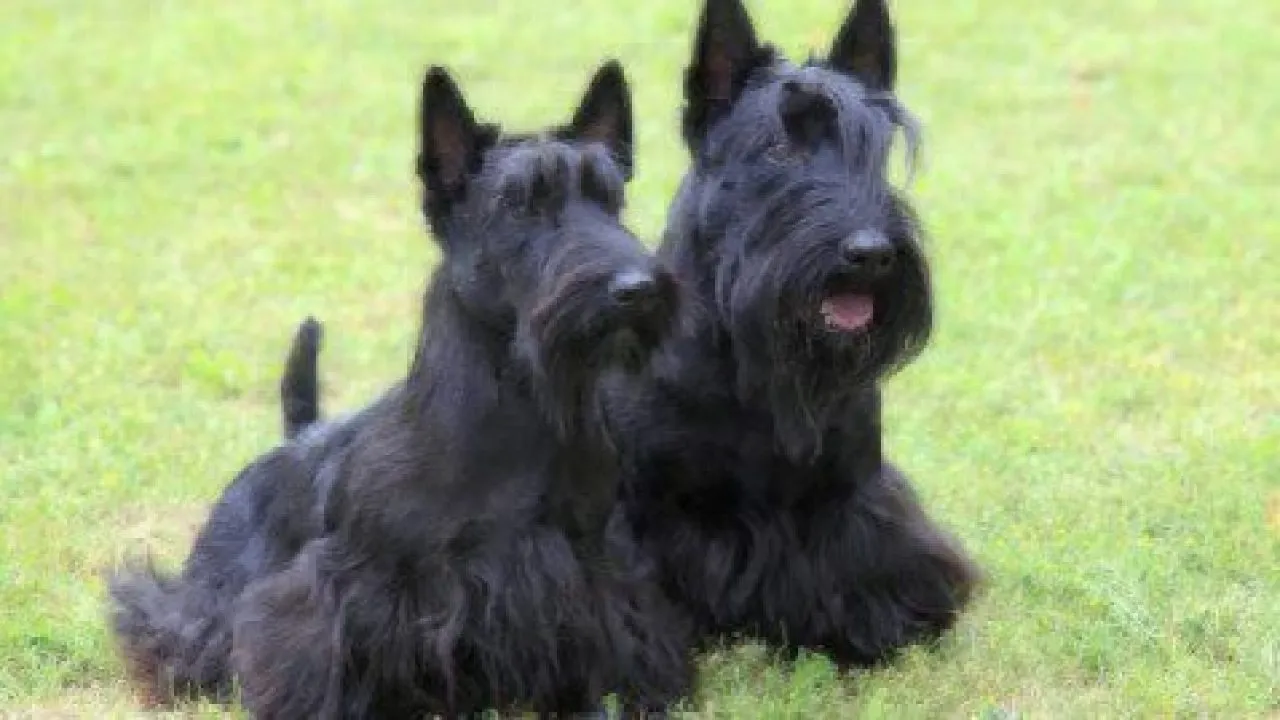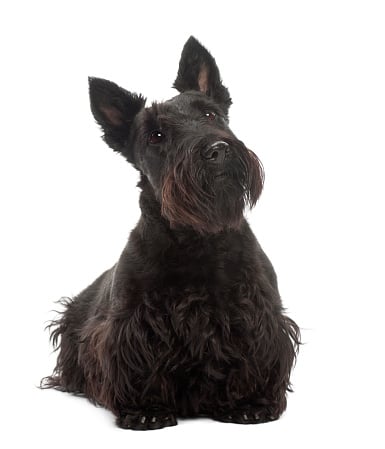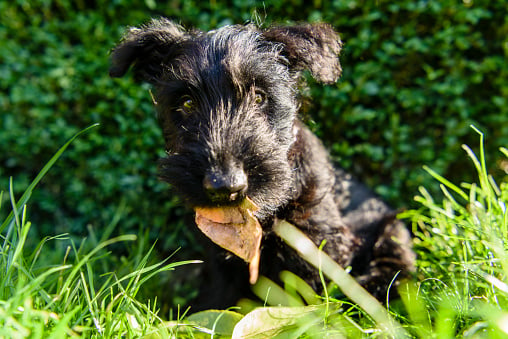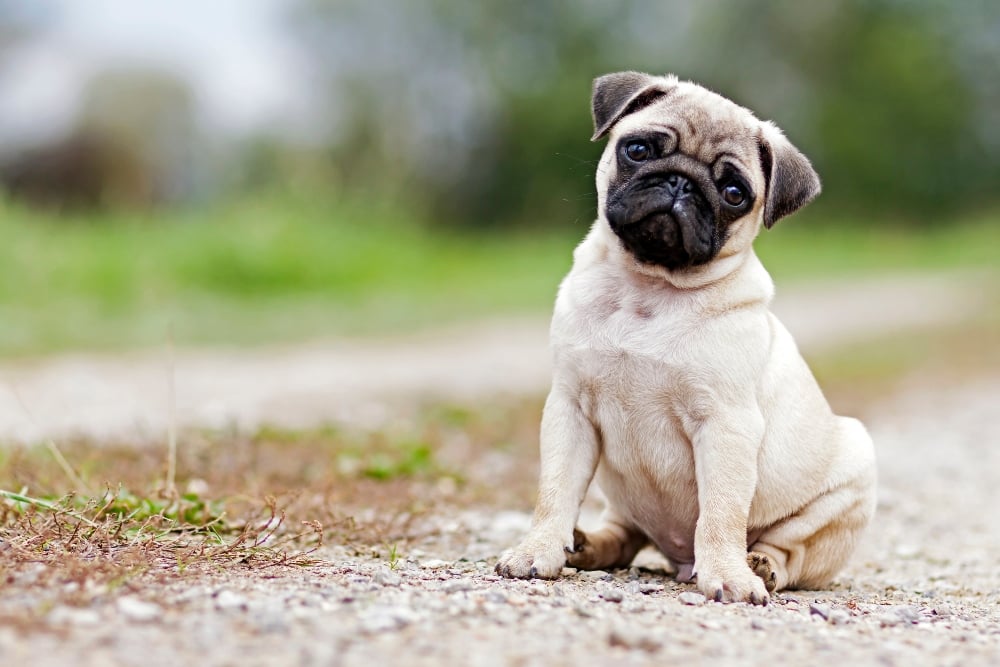Table of Contents
With their comically shaggy beards, long snouts, and adorably stout bodies, it’s hard not to want to run up to every Scottish terrier you see on the street and give them a giant hug. This small highland breed is more than a selfie or snuggle opp, though. They’re energetic, determined, highly loyal pups that make wonderful companions for singles, couples, and families. Learn all about this breed’s personality, history, and more below.
Breed Personality and Physical Description
There’s one personality trait that’s absolutely undeniable to the Scottish terrier: their dignified independence. Though this doggo ultimately enjoys the company of others, they are somewhat cautious when getting to know new faces, and even have an air of independence and hesitation about them. Once they’ve become fully acquainted, though, you’ll have a very loving, loyal, snuggly companion on your hand.
Another personality trait that Scotties are known for is their tendency to be very energetic. Originally bred to be hunters of small prey, this breed very much thrives in the outdoors and love both long and short walks. (Sidenote: they are known for having a propensity for digging, so if they are able to do so in their own yard they’ll be very pleased.)
This innate hunting instinct also means they’re very curious and eager to explore the world around them, which translates to a notable sense of brave wanderlust. For that reason, Scottish terriers are best in a gated yard or on a leash accompanied by high-alert supervision, as they will run off into the great wilderness without so much as a glance back!
In terms of physical appearance, Scotties have a distinctive black, tough coat, but they can be other colors, including grey, brindle, wheaten, and steel. Whatever their coloring, all have two separate coats — a wiry overcoat and a soft undercoat. For best health and appearance, they require weekly at-home grooming and should be trimmed bi-monthly. They are small dogs weighing 18 to 22 pounds with an average height of 10 inches, and their life span is 12 to 15 years.
Breed History
Even dog aficionados sometimes have a difficult time keeping all of the highland terriers straight, so we’d understand if you’re not fully aware of the background details, either. If you take one fact away from this article about their history though, let it be this: they are considered the oldest breed of all the Highland terriers. Further, they are considered the oldest indigenous dog breed to Britain as a whole, dating back to Pliny the Elder in 55 BC.
That said, their history is largely undocumented. What we can tell you, though, is that the Scottie’s ancestors were originally hard-working farmer dogs. Then, in the early 1600s, England’s King James I gifted the French monarch some Scotties. Not only did these dogs become the foundation for the modern-day Scottish terrier, it also triggered their popularity. They eventually found their way to the USA in 1883 and, two years after, the AKC formally recognized them as a breed.
Common Health Issues
Like any breed, Scottish terriers are susceptible to specific health ailments. Those include a condition referred to as Scottie cramp, which is relatively harmless and doesn’t affect lifespan, but may be uncomfortable for them. It occurs when they are overstimulated and presents as overstretching their legs or spine or walking with a goose-step gait.
Scotties are also prone to a blood disorder called Von Willebrand’s disease, craniomandibular osteopathy (a bone disorder that affects puppies ages four to eight months), and patellar luxation (kneecap dislocation). Consistent veterinary appointments, quality food, a healthy weight, and regular exercise are imperative to your Scottie’s wellbeing. Consider enrolling in dog insurance to cover those chronic conditions, as well as everyday accidents, that can come up over your Scottie’s lifetime.
Fun Facts
- The White House has seen several Scottish terriers roaming the hallways. While president, Franklin D. Roosevelt famously owned a male Scottie named Fala, and George W. Bush owned a male Scottie named Bernard “Barney” Bush.
- In the game of Monopoly, a Scottish terrier is one of the player pieces.
- In the same way that clothing can become trendy during a particular period of time, certain dog breeds can also become au currant. The Scottish terrier’s heyday took place in the 1930s and 40s, with notable celebrity owners including Humphrey Bogart and Bette Davis. Today, the breed is sometimes strategically used in textiles for kitschy flair.
Know a Scottie with a selfie-worthy snout? We’d love for you to share a picture of your adorable doggo with us on Instagram by tagging @gohealthypaws. And if you aren’t already a pet parent with us, look into getting a free quote to help safeguard not just your lovable pup, but your wallet too.









